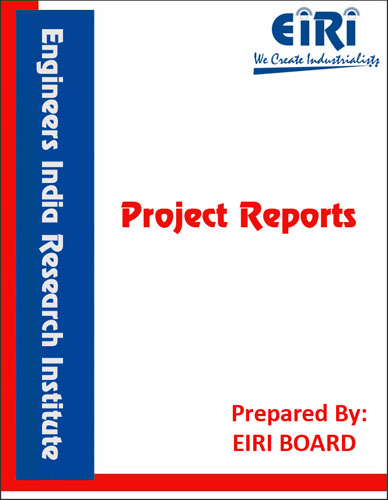The project report includes Present Market Position and Expected Future Demand, Market Size, Statistics, Trends, SWOT Analysis and Forecasts. Report provides a comprehensive analysis from industry covering detailed reporting and evaluates the position of the industry by providing insights to the SWOT analysis of the industry.
Syringe is an instrument which is used for injecting any liquid into the body of human beings or of animals. It consists of a cylinder and an air tight piston. These syringes are used for injecting the medicine into the body or into the nerve of the body which are not possible to take in through mouth or takes much time in mixing with blood.
These syringes are available in sizes varying from 2 C.C. to 100 C.C. Most popular and commonly used sizes are 2 C.C., and 5 C.C. Other sizes are also frequently used but upto lesser extent.
Previously glass was used for making these syringes, the most commonly used glass is Pyrex glass. This glass is shock-resistant, temperature-resistant and has low thermal co-efficient of expansion. But with the development of plastic technology, this glass has been substituted by high grade plastics. Plastic can be used in place of glass for making syringes without any problem.
Plastic syringes are becoming more popular in the medical world due to its lower cost and higher accuracy. To test the efficiency of a syringe, close the tip with a finger and attempt to withdraw the plunger or piston. If the plunger and barrel fit perfectly, the vacuum created in the cylinder will prevent withdrawal of the plunger. The plunger should not be pulled to return rapidly due to the vacuum created or the barrel may be cracked.
With the development of pharmaceutical industries the use of syringes has also developed. About 70% pharmaceutical industries are in small scale sector. The output of the small scale sector covers a wide spectrum of formulations, which includes antibiotics vitamins, anti T.B. drugs, antidysentery drugs, anti-rheumatics, haematinies, hormonal preparations, tranquilizers, analgesics and anti-phyreties. Indeed this is a very wider range of product mix. About 50 percent of the above listed drugs are injectable and for that purpose syringes are required.
Disposable Syringes are being used by doctors to inject medicines through intravenous or intramuscular ways for the treatment of diseases & also by research & development personnel. Disposable syringes are made of plastic material and are used in the field of medical and veterinary science. Due to their availability in sterilized condition, ready to use, and cost effectiveness, disposable syringes are fast replacing the age-old glass syringes. Moreover, the horror of AIDS worldwide has almost dispensed with the reuse of syringes and the demand of disposable syringes has increased phenomenally. Disposable syringes are mostly injection moulded from polypropylene. Syringes are available in sizes of 1 ml, 2 ml, 5 ml and 10 ml, 50ml in a variety of designs and consist of either two or three components construction. The number and size of injection moulding machines required depend upon syringe construction, number of mould cavities, annual production.
Disposable Syringes made of plastic Material have been successfully used in medical and pharmaceutical practice for many years. The constantly increasing use of this type Syringe indicates its importance. Which is based mainly on the advantages it offers regarding cost and hygienic applications.
The manufacture of plastic syringes has been developed to such a degree that the products now satisfy the requirements and standards set by Hospital and physicians.At the same time they offer the best possible technique of application to the physician and the highest possible degree of safety to the patient.
INTRODUCTION
CHARACTERISTICS OF SYRINGES
PARTS OF A SYRINGE
TYPES OF SYRINGE TIPS
TYPES OF SYRINGES
HYPODERMIC NEEDLES
TYPES OF HYPODERMIC NEEDLES
USES AND APPLICATION
B.I.S. SPECIFICATION
MARKET SURVEY
ANALYSIS OF EXPORTS OF DISPOSABLE SYRINGE
ANALYSIS OF IMPORTS OF DISPOSABLE SYRINGE
SUPPLIERS OF DISPOSABLE SYRINGE
SUPPLIERS OF HYPODERMIC NEEDLE
MANUFACTURING PROCESS
MANUFACTURING PROCESS OF CANNULA
MANUFACTURING PROCESS OF HUB
QUALITY CONTROL
TESTING – AS PER GIVEN B.I.S
TESTING
MANUFACTURING PROCESS OF DISPOSABLE SYRINGE
BLOCK DIAGRAM FOR MAKING DISPOSABLE NEEDLES
MANUFACTURING PROCESS AND SOURCE OF TECHNOLOGY
INSPECTION AND TESTING
PROCESS FLOW CHART FOR DISPOSABLE SYRINGE
SUPPLIERS OF PLANT AND EQUIPMENTS
FOR DISPOSABLE SYRINGE/TURNKEY CONSULTANTS
SUPPLIERS OF RAW MATERIALS
APPENDIX – A :
1. COST OF PLANT ECONOMICS
2. LAND & BUILDING
3. PLANT AND MACHINERY
4. FIXED CAPITAL INVESTMENT
5. RAW MATERIAL
6. SALARY AND WAGES
7. UTILITIES AND OVERHEADS
8. TOTAL WORKING CAPITAL
9. COST OF PRODUCTION
10. PROFITABILITY ANALYSIS
11. BREAK EVEN POINT
12. RESOURCES OF FINANCE
13. INTEREST CHART
14. DEPRECIATION CHART
15. CASH FLOW STATEMENT
16. PROJECTED BALANCE SHEET



